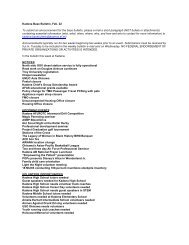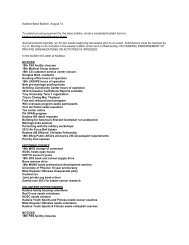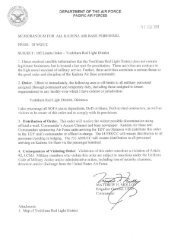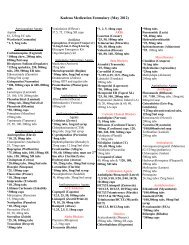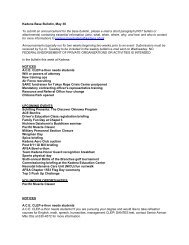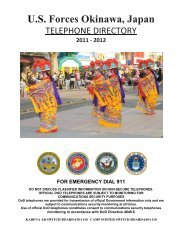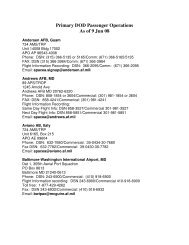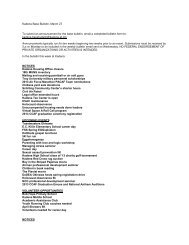JP 3-52, Joint Airspace Control - Defense Technical Information ...
JP 3-52, Joint Airspace Control - Defense Technical Information ...
JP 3-52, Joint Airspace Control - Defense Technical Information ...
Create successful ePaper yourself
Turn your PDF publications into a flip-book with our unique Google optimized e-Paper software.
Introductionintent. The primary goal of airspace control is to enhance effectiveness of the jointforce and increase the safety of joint air operations. Basic principles of airspacecontrol are listed in Figure I-2 and described below.FUNDAMENTAL CONSIDERATIONS OFAIRSPACE CONTROL• The need for each component within the joint force to operate a variety ofaircraft and weapon systems, both high and low speed, rotary- and fixedwing(manned and unmanned).• The need for each component to use the airspace with maximum freedomconsistent with the degree of risk operationally acceptable to the joint forcecommander.• The need for airspace control activities to be performed in congruence withair defense operations to integrate and synchronize surface-to-air defenseweapons and air defense aircraft for maximum effectiveness.• The need to discriminate quickly and effectively between friendly, neutral,and enemy air operations, vehicles, and personnel.• The need for the airspace control system to be responsive to therequirements of the joint force. The airspace control system needs to becapable of supporting high-density traffic and surge operations as may berequired by the joint force commander.• The need for close coordination and integration of surface force operations,supporting fires, air operations, air defense operations, special operations,and airspace control activities.• The need to accommodate US, host-nation, and multinational airspacecontrol activities.• The need to recognize the saturation levels and limitations of airspacecontrol networks.• The need for temporary restrictive airspace coordinating measures forcertain areas of airspace to allow subordinate commanders maximumfreedom of action.• The need to incorporate, in detail, coordinated offensive operations usingelectronic warfare elements, strike aircraft, and missiles to ensure thatdefensive elements of procedures of the force do not unacceptably inhibit ordegrade offensive capabilities.• The need to ensure that the airspace control network remains survivable andeffective.• The need to provide maximum opportunities to employ deception measures.• The need to standardize communications data, format, and languagerequirements in multinational operations to reduce the possibility ofdifferences in interpretation, translation, or application of airspace controlprocedures during multinational operations.• The need to support 24-hour operations in all weather and environmentalconditions.Figure I-1. Fundamental Considerations of <strong>Airspace</strong> <strong>Control</strong>I-3



